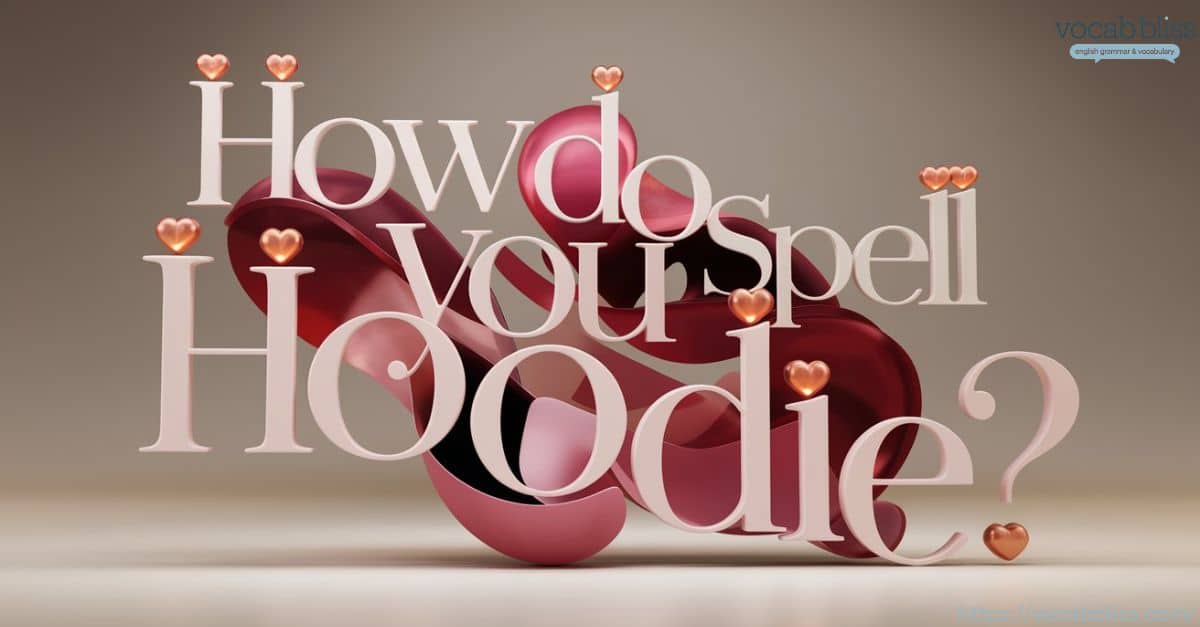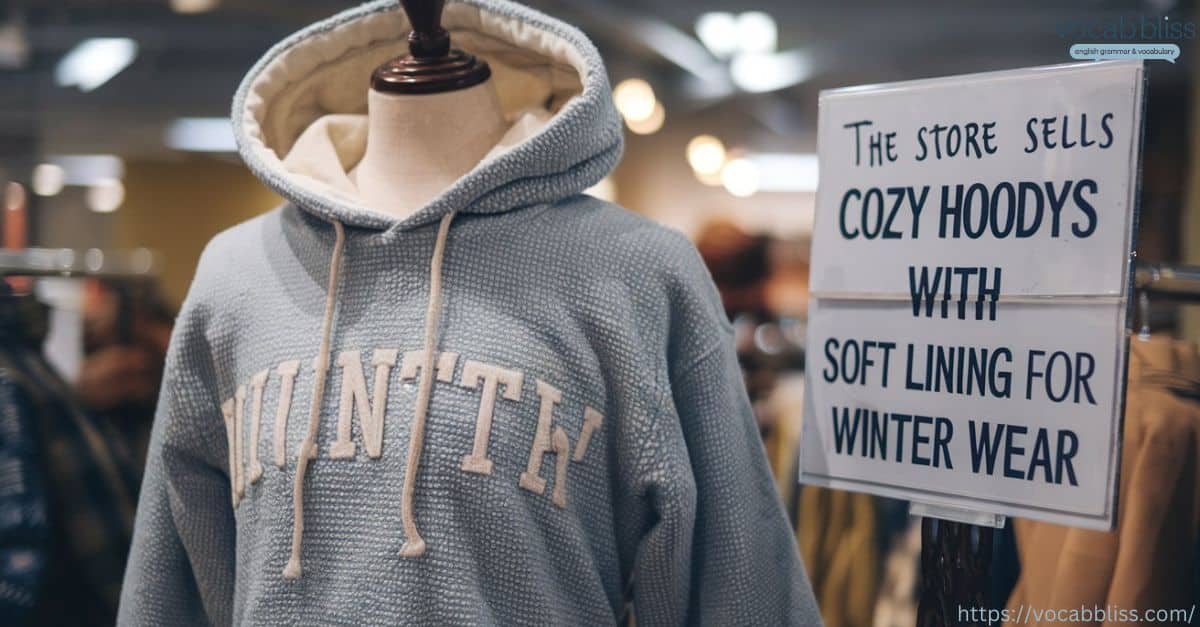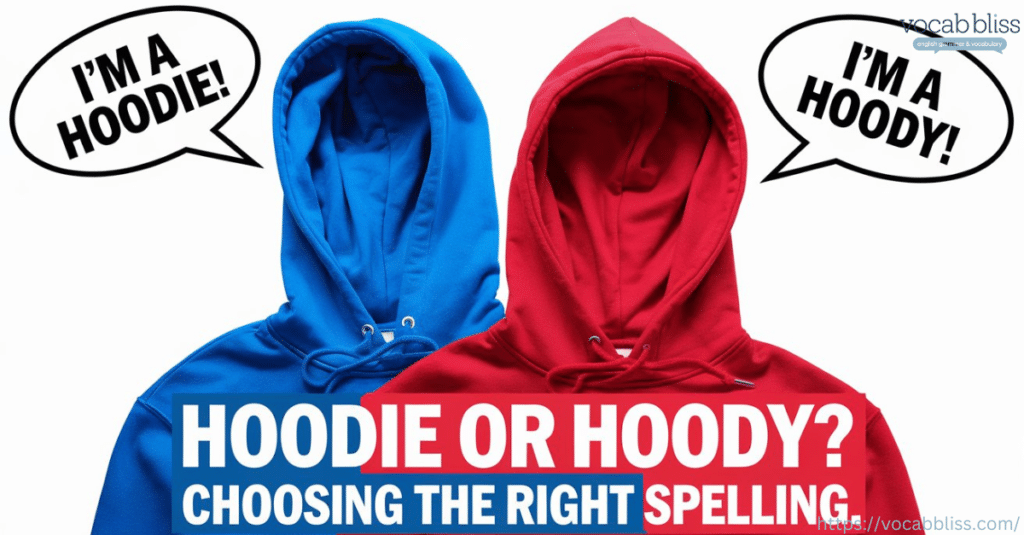The hoodie: a symbol of comfort, style, and versatility. Whether you’re layering up on a chilly morning or adding a casual touch to an outfit, hoodies are the go-to for people of all ages. But a surprisingly common question surrounds this cozy garment: Is it spelled “hoodie or hoody“?
If you’ve ever wondered about the “correct” spelling, why both versions exist, and which one you should use, you’re in the right place. In this article, we’ll dive deep into the nuances between “hoodie” and “hoody,” their origins, spelling rules, usage examples, and much more.
What is Hoodie (or Hoody)?
what is a hoodie (or hoody) In short, a sweatshirt with an attached hood, typically featuring drawstrings for adjusting the hood and a kangaroo pocket in the front. This garment has become a staple in wardrobes worldwide due to its comfort and versatility. Hoodies are popular in casual wear, sports, streetwear, and even high fashion, where designers have reimagined them for the runway.
Key Features of a Hoodie
Here are the key elements that make up a hoodie:
- Hood: Provides warmth and coverage, especially useful in colder weather.
- Drawstrings: These allow for adjustment around the face and neck for added comfort.
- Kangaroo Pocket: A front pocket that’s practical for keeping hands warm or storing small items.
- Materials: Typically made from soft, warm materials like cotton, fleece, or polyester.
- Style Variety: Hoodies are available in different fits (slim, oversized), colors, and designs—including plain, graphic-printed, or logo-branded options.
Hoodies serve a wide range of purposes, from layering at the gym to keeping cozy during winter. They’re also a popular choice for promotional apparel, often customized with logos for schools, companies, or sports teams.
Hoodie vs Hoody: Which Spelling is Correct?

The choice between “hoodie vs hoody” comes down to spelling preferences and regional variations. While both spellings are acceptable, “hoodie” has become more widely recognized, especially in American English. On the other hand, “hoody” occasionally appears in British English and Australian English, and some brands use it to differentiate their products.
Discover more: Catalogue or Catalog: What’s the Right Spelling?
Regional Preferences and Popularity
In general:
- Hoodie: The most common and widely accepted spelling, especially in American and Canadian English. Many U.S. brands, like Nike and Champion, use “hoodie” as the standard.
- Hoody: Less common but used by certain brands, often in British or Australian English contexts. Some clothing companies adopt “hoody” as a stylistic choice to create a unique brand identity.
Both spellings are valid, but “hoodie” has gained wider acceptance across English-speaking countries, particularly in commercial and digital contexts.
Hoodie: The More Widely Accepted Spelling
“Hoodie” has taken hold as the preferred spelling across major fashion retailers, social media platforms, and in everyday language. Most people are likely to encounter “hoodie” as it is the form seen on major retail sites, e-commerce platforms, and clothing labels.
Why “Hoodie” is the Preferred Spelling
There are several reasons why “hoodie” has become the dominant spelling:
- U.S. Influence: American English tends to favor “hoodie,” and as American brands gained popularity globally, this spelling spread.
- Digital Presence: “Hoodie” has greater search engine relevance, which makes it more visible online.
- Standardization in Fashion: Most fashion brands and sports retailers use “hoodie” on their product listings, from sweatshirts to layering pieces and branded merchandise.
Example Uses of “Hoodie”
- “I just bought a cozy hoodie with fleece lining.”
- “This season’s hoodie collection includes trendy colors and oversized fits.”
- “Our team hoodies are great for school spirit and family events.”
The word “hoodie” is easily recognized, well-documented in dictionaries, and has become part of everyday language in the U.S. and internationally.
How Do You Spell Hoodie?

The correct and most widely accepted spelling is “hoodie”. This is the spelling used in American English and by the majority of brands and retailers globally.
The alternative spelling, “hoody”, is less common but occasionally seen, especially in British or Australian English contexts or as a stylistic choice by some brands. However, “hoodie” remains the standard and is generally the preferred spelling.
Hoody: A Less Common, but Acceptable Spelling
While “hoody” isn’t incorrect, it’s certainly less popular. This spelling is used more selectively, sometimes for stylistic branding purposes or in specific regions.
Situations Where “Hoody” is Used
Some brands, especially those in the U.K. and Australia, opt for “hoody” as a way to stand out. Smaller or boutique labels might also prefer this spelling to give their products a unique edge.
Examples of “Hoody” in Sentences
- “My favorite hoody has a relaxed fit that’s perfect for lounging.”
- “This hoody features custom graphics and an oversized kangaroo pocket.”
- “The store sells cozy hoodys with soft lining for winter wear.”

While “hoody” might not be the standard, it has a niche following in some English-speaking regions and among brands that want a distinctive touch.
Origins of the Terms “Hoody or Hoodie”
The hoodie’s story goes back almost a century. Originally, Champion, a popular sportswear brand, designed hoodies in the 1930s as workwear for laborers. Since then, the hoodie has transformed from a purely functional garment to a cultural icon in both casual wear and fashion. Below is a quick timeline of the hoodie’s evolution.
| Decade | Development of the Hoodie |
|---|---|
| 1930s | Champion introduced hoodies for laborers in cold climates. |
| 1970s | Gained popularity with hip-hop culture and streetwear. |
| 1980s | Hoodies appeared in movies like Rocky, symbolizing resilience. |
| 1990s | Mainstream acceptance, with designers adding hoodies to collections. |
| 2000s | Hoodies became a staple in casual and high-fashion wardrobes. |
As the hoodie became popular worldwide, both “hoodie vs hoody” emerged as names for this garment. Today, both terms are accepted, but “hoodie” is widely favored.
Hoody or Hoodie: Analyzing Language Trends and Popularity
To further clarify which term is more common, let’s look at language trends and online search data. Data from Google Trends and Google Ngram Viewer shows that “hoodie” is consistently more popular than “hoody” across multiple regions.
Key Findings from Language Data
- Google Trends: “Hoodie” has significantly higher search volumes globally compared to “hoody.”
- Dictionary Listings: Most dictionaries, including Merriam-Webster and Oxford, list “hoodie” as the primary form, while “hoody” is less common or absent.
For example, a search on popular e-commerce sites like Amazon or eBay returns far more results for “hoodie” than “hoody.” This data suggests that, even though “hoody” is acceptable, it’s used far less frequently.
Plural Forms: Hoodies or Hoodys?

Pluralization is another consideration. The correct plural form follows standard English rules based on each spelling variant.
Pluralization Rules
| Singular Form | Plural Form |
|---|---|
| Hoodie | Hoodies |
| Hoody | Hoodys |
For “hoodie,” hoodies is the plural form, and it’s widely accepted. For “hoody,” hoodys follows the standard English rule, though it’s less commonly seen.
Example Sentences Using Plural Forms
- “This store has a wide variety of colorful hoodies for every season.”
- “These hoodys are perfect for lounging and casual wear.”
Both plural forms follow regular English pluralization rules, but “hoodies” is the more widely used and recognized plural.
Real-Life Examples of “Hoodie or Hoody” in Sentences
To illustrate how each term is used in context, here are some practical examples:
Sentences Using “Hoodie”
- “The hoodie is a wardrobe staple for people of all ages.”
- “Hoodies are perfect for chilly evenings by the campfire.”
- “She bought a cozy, fleece-lined hoodie for winter.”
- “This hoody is lightweight and ideal for casual outings.”
- “The hoody comes in an oversized style popular with students.”
- “Our custom hoodys make great team wear for school sports.”
- “We sell hoodies in a variety of colors, sizes, and designs.”
- “Many people prefer hoodies for daily wear, especially in cool weather.”
- “This brand offers both classic and zip-up hoodies.”
Usage Scenarios and Popularity in Different Contexts

Both hoodies or hoodys are suitable for various
scenarios, each offering a unique blend of style and comfort.
Common Uses for Hoodies:
- Casual Wear: Perfect for lounging or running errands.
- Sports & Gym: Often used for layering during workouts or outdoor activities.
- Promotional Apparel: Commonly customized with logos for universities, teams, or events.
- Weather Protection: Hoodies are ideal for staying warm in cooler temperatures.
Key Markets and Trends
- Streetwear: Oversized hoodies have become iconic in streetwear fashion, with brands focusing on style and graphics.
- High-Fashion Collaborations: Designers frequently collaborate with sportswear brands, elevating hoodies to runway status.
- University and Team Wear: Customized hoodies are popular among schools, universities, and sports teams.
The hoodie’s adaptability makes it a preferred garment in multiple settings, from gym wear to family gatherings.
Conclusion: Hoodie or Hoody?
While both spellings, “hoodie or hoody,” are technically correct, “hoodie” is by far the preferred choice, especially in the U.S. and online retail. “Hoody” does appear in specific contexts, mostly in British and Australian English or by select brands as a stylistic choice.
When choosing between the two:
- Opt for “Hoodie” if you’re writing for a general audience, using American English, or creating content for commercial use.
- Consider “Hoody” in more informal or regional contexts, or if you’re following specific brand guidelines.
In any spelling, the hoodie continues to be a beloved piece of clothing that combines comfort, practicality, and style.







